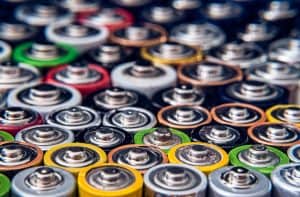
The Exploding Pumpkin and Other Fun Fall Science Experiments
September 20, 2022 - Emily Newton
Revolutionized is reader-supported. When you buy through links on our site, we may earn an affiliate commision. Learn more here.
Summer is officially over, but that doesn’t mean the fun has to stop — and science experiments are almost always guaranteed to be fun. If you’re tired of the baking soda volcano, here are some fun fall science experiments that kids can do with an adult or under adult supervision. We’ve even got some tips on exploding pumpkins, but you’ll have to wait until the end of the article to see that one!
Pumpkin-Cano!
OK, we get that you’re tired of the basic baking soda volcano — but why not turn your pumpkins into miniature pumpkin-canos?
This is easier with tiny pumpkins, but if you’ve got enough baking soda and white vinegar, you can easily turn a full-sized carving pumpkin into a volcano. Ingredients:
- Baking soda
- White vinegar
- Food coloring (optional)
- Pumpkins
Cut the top off of your mini-pumpkin and clean out the interior, just like you would if you were planning on carving it. Fill it about halfway with white vinegar, then dump in some baking soda and watch the fun begin. If you are handy with a knife, carve a face on the pumpkin, add the vinegar and baking soda, and put the lid back on. You can watch its face leak all over the table.
This is an experiment your kids can do on their own. Just make sure an adult handles the carving.
Pumpkin Slime
Slime is one of the most popular science experiments these days. With some white glue, borax and contact lens cleaning solution, your kids can make their very own slime. Why not give it a fall twist and make some pumpkin slime instead? Ingredients
- Baking pumpkin, small
- Liquid starch
- Clear Elmers Glue
- Water
- Knife, spoon, etc.
Start by cutting off the top of the pumpkin and removing all the loose seeds and guts. You don’t want to take out all the guts — just enough that you can incorporate the rest into the slime. Mix half a cup of water with half a cup of the clear glue and stir to combine. Pour that directly into your pumpkin.
Now it gets messy. Add half a cup of liquid starch to your pumpkin and start mixing. Encourage your kids to get their hands in there, because the more you mix, the more slime-like the mixture will become. Once it starts to congeal, your kids can pull the pumpkin slime out and play with it. It probably won’t last long, considering the fact that it’s mixed with organic materials, but it can be a fun afternoon project nonetheless.
Pumpkin-Ception
If your kids like getting dirty, this can be a great experiment — growing a pumpkin inside another pumpkin! You can do this with big pumpkins or small ones, depending on what you have available. You will need:
- Pumpkins, any size
- Soil
- Pumpkin seeds
Cut the top off of your pumpkins and clean them out enough that you can fill them with soil. You don’t have to remove all the guts — anything left will serve as fertilizer — but you might want to remove most of the seeds to keep the plants from overcrowding one another. Fill the pumpkin with soil and plant your seeds. Make sure you water them regularly.
Once you see roots appearing, simply plant the entire thing in your yard or flower bed, as long as there is enough room for the vines to grow. The pumpkin planter will provide nutrients for the new seeds as it decomposes.
While getting the plants started in September or October when they start appearing in stores can be a great fall science experiment, chances are your plants won’t survive the winter. If you want to grow pumpkins that you’ll be able to harvest, you’ll want to do this experiment in June or July. Pumpkins take 100 days to mature and prefer cooler end-of-summer or fall weather. You’ll want to plant them so you can harvest before the first frost, which might vary depending on where you’re located.
Flying Pumpkins
There’s a reason people put big fruits like watermelon and pumpkins in giant slingshots to watch them fly across the landscape — they look awesome when they explode on landing! You can either make a little tabletop catapult that can throw small pumpkins, or go all out and build a big one that can send your jack-o-lanterns flying.
You’ll need quite a bit for this big project, including:
- Three 4×4 planks, 8 feet long
- Seven 2×4 planks, 8 feet long
- Galvanized pipe, 1×30, 1 1/4-inch diameter
- Eight 3-inch deck screws
- 40 4-inch deck screws
- Eye bolts — two 1/4 x 4 inches and one 1/4 x 6 inches
- Six to eight 36-inch heavy-duty bungee cords
- Pumpkin-sized bucket
- Tools — tape measure, protractor, saw, power drill, screwdriver, drill bits (1/4 inch and 3/8 inch) and a 1 3/8 speedbor bit
Follow the assembly instructions — including pictures — so you can make sure you assemble it correctly. Once it’s put together, simply find an empty field and let those pumpkins fly.
Exploding Pumpkins
Here it is — the moment you’ve all been waiting for — self-carving exploding pumpkins! This can be a dangerous experiment, so children should watch and not participate.
You’ll need the following to make this awesome experiment come to life:
- Hydrogen peroxide — 50 ml or roughly 1/4 cup
- Water — 20 ml
- Calcium carbide — Roughly seven pea-sized chips
- Oven mitt or something to secure the pumpkin’s lid on
- A piezoelectric sparker
- Cat food or tuna can
Preparation
Start by carving your pumpkin. Clean out the guts and set them aside — no point in wasting perfectly good pumpkin seeds when you can roast them and snack on them later. Carve a face on your pumpkin. Big circles, triangles and other similar face shapes work well. Once they’ve been cut out, replace them in the pumpkin.
Next, you’ll want to install your sparker. Drill a small hole in the back of the pumpkin, opposite the face you’ve carved, and test it to make sure it fires. Now the fun begins.
First, pour your peroxide in the bottom of the pumpkin. Then pour the water in the can and set it in the center of the pumpkin. Your last step before putting the lid back is to have everyone step back, put on some safety goggles and add the calcium carbide chips to the water. Then replace the lid, and give it about a minute for the reaction to take place.
Creating the Explosion
Calcium carbide and water creates acetylene gas and calcium hydroxide. The gas is highly flammable, so when you drop the calcium carbide in the water and close the lid, the gas builds up inside the pumpkin.
Now for the fun part. Spark the sparker!
The sparker will ignite the acetylene gas, creating a contained explosion that will blow the face right off your pumpkin.
This is a dangerous experiment, so make sure everyone is at a distance before you set off that sparker.
This is the perfect time for warm food, comfy sweaters and fall science experiments that let you blow up pumpkins or throw them long distances. Make sure you’re safe with your experiments. Kids shouldn’t be handling sharp knives or dangerous chemicals. Be safe and enjoy these fun fall science experiments.
Want even more science fun? Check out these spooky Halloween science experiments!
Editor’s Note: This article originally published on October 16, 2018 and was updated on September 20, 2022 to remove broken images.
Revolutionized is reader-supported. When you buy through links on our site, we may earn an affiliate commision. Learn more here.
Author
Emily Newton
Emily Newton is a technology and industrial journalist and the Editor in Chief of Revolutionized. She manages the sites publishing schedule, SEO optimization and content strategy. Emily enjoys writing and researching articles about how technology is changing every industry. When she isn't working, Emily enjoys playing video games or curling up with a good book.




